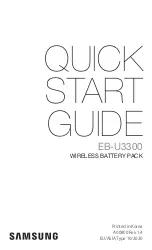
4
SAFETY INSTRUCTIONS
WARNING
THIS EQUIPMENT CONTAINS LETHAL VOLTAGE LEVELS. INSTALLATION AND SERVICING
MUST BE PERFORMED BY QUALIFIED PERSONNEL
IMPORTANT: SAVE THESE INSTRUCTIONS!
READ AND FOLLOW ALL INSTRUCTIONS BEFORE INSTALLING, OPERATING, OR
SERVICING CHARGER. ANY DEVIATION CAN CAUSE SERIOUS AND PERMANENT
DAMAGE. FAILURE TO FOLLOW THE INSTRUCTIONS VOIDS THE WARRANTY.
1.
Install and ground the charger in accordance with the National Electric Code and your local electric
code. Failure to properly ground the charger could result in a fatal electric shock.
2.
“CAUTION” – Risk of fire. Use only on circuits provided with 30 amperes branch circuit protection in
accordance with the National Electrical Code, NFPA70.
3.
To reduce the risk of fire, install chargers on a surface of non-combustible material, such as
concrete, stone, brick or grounded metal.
4.
This charger has been designed to charge many chemistries of battery, the appropriate charge
algorithm for the chemistry of battery to be charged must be set in the controller. (Lead-acid flooded
or sealed, Ni-Cad and Lithium Ion)
5.
Connect only batteries of the same number of cells as listed on the charger nameplate. Damage to
the battery could occur, particularly if the battery has fewer cells than the rating of the charger.
6.
Do not touch uninsulated parts of the output connector or battery terminals. A possibility of serious
electrical shock exists.
7.
During charge, batteries produce hydrogen gas, which can explode if ignited. Never smoke, use an
open flame, or create sparks in the vicinity of the battery. Ventilate well when the battery is in an
enclosed space.
8.
Do not connect or disconnect the battery plug while the charger is on. Doing so will cause arching
and burning of the connector possibly resulting in charger damage or battery explosion and will void
the charger warranty.
9.
Lead-acid batteries contain sulfuric acid, which is caustic and can cause chemical burns to the skin.
Refer to the battery manufacturer’s instructions for safe handling of batteries. Use proper personnel
protective equipment. Do not get in eyes, on skin, or on clothing. In cases of contact with eyes,
flush immediately with clean water for 15 minutes. Seek medical attention immediately.
10.
Do not operate the charger with any panels removed. De-energize all AC and DC power
connections before servicing the charger.
11.
The charger is not for outdoor use. Do not expose the charger to water spray, rain or snow.
12.
Do not operate the charger with damaged cables, including cables with exposed conductors or
damaged connectors. Replace damaged cables before operation.
13.
Do not operate the charger if it has been dropped, received a sharp blow, or otherwise damaged in
any way. Call your service representative.
Summary of Contents for HIGH FREQUENCY Series
Page 1: ...High Frequency Battery Charger Installation and Operation Manual ...
Page 16: ...16 ...
Page 17: ...17 ...



































